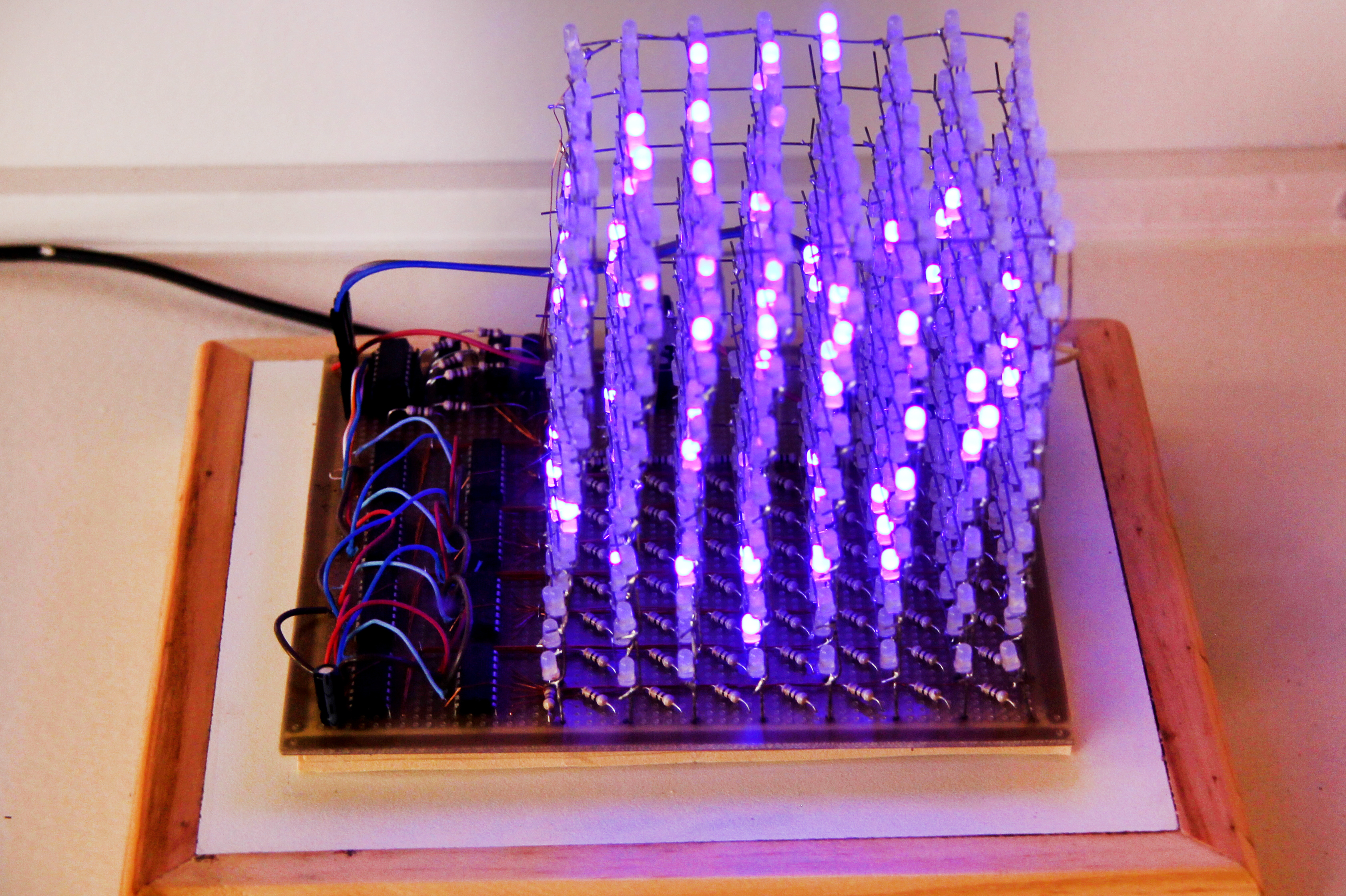3D GAME OF LIFE
In this exhibit, in each cycle, the LEDs that are lit are read and it is decided which ones will be lit in the next cycle, according to a rule: “a LED will be lit in the next cycle if exactly 4 of its neighbors were lit in the previous cycle” .
The initial condition is chosen by lot. Every time the LED pattern reaches a steady state (everything off, for example), a new initial condition is drawn. Otherwise, the process stops after a certain number of iterations.

This is an adaptation of the famous Game of Life created by John Horton Conway in 1970, which features stationary, periodic, self-replicating patterns and a whole fauna of phenomena that justifies its name. It belongs to a broad class of dynamic systems called cellular automata.
In Conway's Game of Life, the rule is slightly different from the one we programmed in the 3D version: an unlit cell lights up if it has exactly 3 neighboring cells (out of the possible 8) lit. And a lit cell only stays lit if it has exactly 3 or 4 neighboring cells lit.
In this version, exploited to exhaustion by thousands of people, anything happens! In the next image, you can see a sequence of steps in which the stable configuration of four lights (the little square) is destroyed by a block of lights that "shifts".

